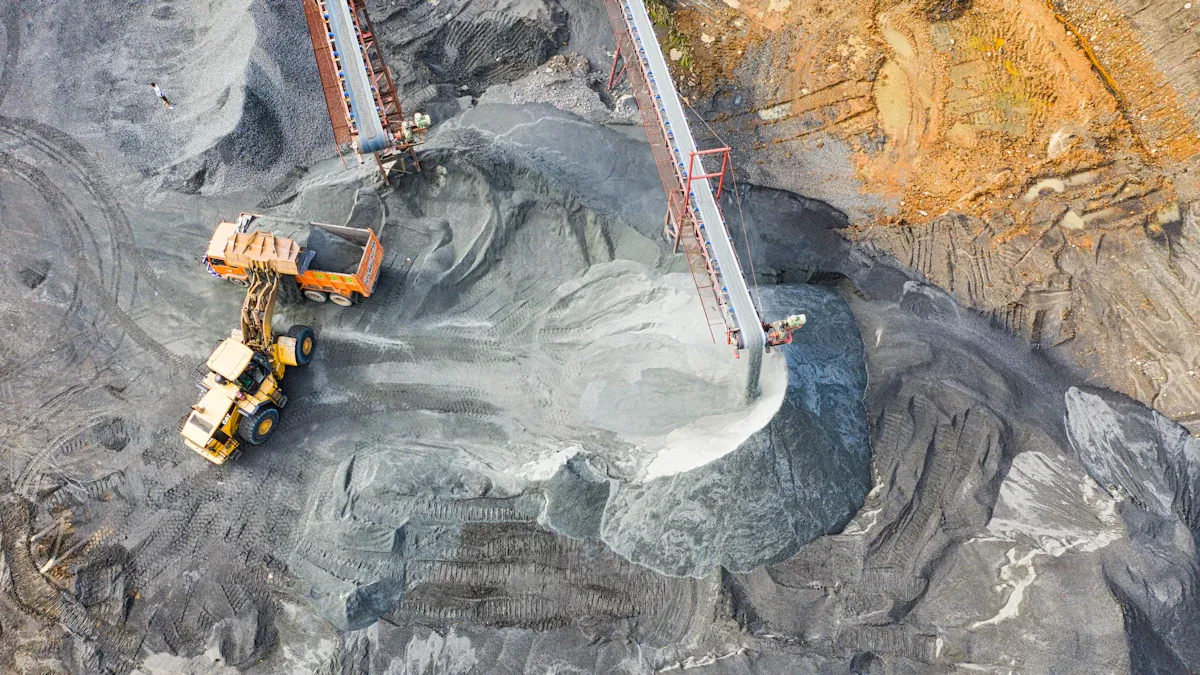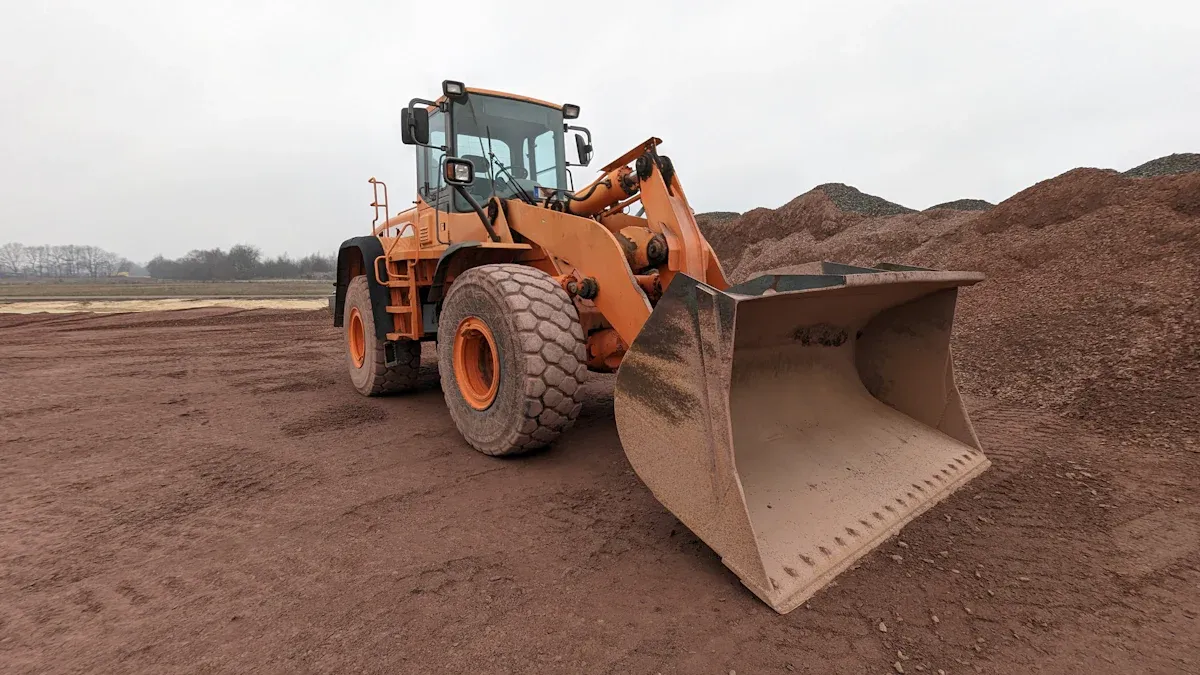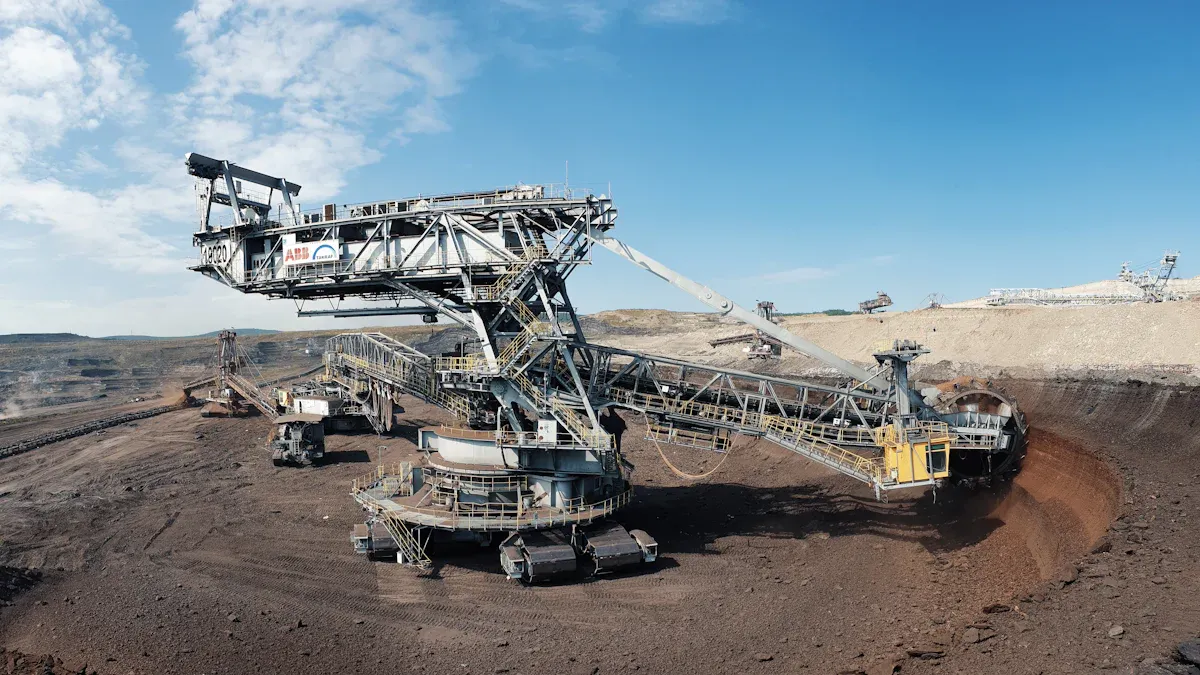
Manganese wear parts stand as essential components in heavy-duty industries. These parts deliver remarkable durability due to their unique ability to resist wear under high stress. When subjected to impact, manganese steel hardens, enhancing its performance in demanding environments. Ignoring their benefits can lead to equipment failure and higher operational costs.

Manganese steel stands out due to its exceptional combination of strength, toughness, and wear resistance. This material contains 10% to 14% manganese, which significantly enhances its mechanical properties. Manganese increases the steel's hardness and reduces brittleness, making it ideal for high-impact environments. Unlike other materials, manganese steel becomes harder when subjected to stress, a property known as work-hardening. This unique characteristic ensures that manganese wear parts can endure extreme conditions without compromising performance.
Comparing manganese steel to alternative materials highlights its superiority. For instance:
- Microalloy crusher liners may offer slightly higher initial surface hardness but lack the impact toughness of manganese crusher liners.
- Microalloy products sacrifice toughness to improve wear resistance, which can lead to premature failure in demanding applications.
Laboratory tests further validate manganese steel's durability. The Mn8/SS400 bimetal composite, for example, exhibits significantly lower weight loss compared to conventional wear-grade steels over extended periods. This superior wear resistance ensures that manganese wear parts last longer, reducing the need for frequent replacements.
Work-hardening is a game-changer for manganese wear parts. When exposed to high-impact forces, the surface of manganese steel hardens while maintaining its inner toughness. This dual property allows the material to resist wear and absorb shocks simultaneously. The harder the surface becomes, the better it performs in abrasive environments.
Research studies emphasize the importance of work-hardening in enhancing material strength. For example, optimizing cold working and age-hardening processes can significantly improve yield strength and hardness. These processes create small particles within the material that block dislocation motion, increasing its ability to withstand high-impact applications. This principle applies to manganese wear parts, where work-hardening ensures durability even under the most challenging conditions.
Investing in manganese wear parts offers substantial economic benefits. Their extended lifespan reduces the frequency of replacements, saving both time and money. For instance:
- Components made from manganese steel last 4.3 times longer than those made from alternative materials.
- This longevity leads to three times fewer liner replacements, cutting down on maintenance costs and downtime.
The efficiency improvements are equally impressive. By adopting manganese wear parts, industries can increase daily uptime to 20-22 hours, boosting production capacity from 50,000 tons per day to 60,000 tons per day. This enhanced productivity translates to higher revenue. In fact, optimizing manganese liners can generate an annual revenue increase of over 3 million yuan. Additionally, the reduced need for replacements minimizes safety risks and labor costs, further enhancing the overall cost-effectiveness of manganese wear parts.
The global demand for manganese steel reflects its economic value. The market is projected to grow from USD 15 billion in 2023 to USD 22 billion by 2032, driven by its strength and cost-efficiency. Industries such as construction, automotive, and machinery rely on manganese steel for its unmatched performance and durability. By choosing ideal manganese wear parts tailored to specific applications, you can maximize these benefits and achieve long-term savings.

Manganese wear parts play a critical role in various industries, offering unmatched durability and performance in demanding environments. Their ability to withstand high abrasion material and work-harden under stress makes them indispensable for heavy-duty applications. Let’s explore how these wear parts excel in specific sectors.
In mining and quarrying operations, equipment faces constant exposure to abrasive materials and high-impact forces. Manganese wear parts, such as crusher liners, screens, and excavator buckets, are designed to endure these harsh conditions. Their unique properties ensure long-lasting performance and reduced maintenance needs.
| Application | Benefit |
|---|---|
| Crusher Liners | Protects from abrasive materials |
| Screens and Grizzlies | Ensures effective sorting and grading |
| Hoppers and Chutes | Enhances equipment longevity |
| Crusher Jaws and Cones | Essential for breaking down large rocks |
| Excavator Buckets and Shovels | Withstands harsh mining conditions |
| Wear Plates | Extends lifespan and reduces maintenance costs |
Using manganese wear parts in mining equipment leads to significant efficiency improvements. Maintenance intervals increase by 30–40%, and the frequency of replacements decreases. This results in lower operating costs and improved machine availability. By investing in these wear parts, you can enhance the productivity of your mining operations while minimizing downtime.
Crushers and heavy machinery rely heavily on manganese wear parts to handle high-impact and high-abrasion material. These parts, including crusher jaws, cones, and liners, are essential for breaking down rocks and other tough materials in rock crushing operations. Manganese steel’s ability to work-harden under stress ensures that these components last longer and perform better than alternatives.
Manganese steel offers superior wear resistance and durability.
Crushers equipped with manganese wear parts experience reduced maintenance costs and downtime.
The longer service life of these parts enhances the overall efficiency of crushing operations.
Comparative analysis reports validate the performance of manganese wear parts across various industrial sectors. For example, the manganese aluminum alloy market spans industries like automotive, aerospace, and construction, where these alloys enhance product performance and efficiency. In rock crushing operations, manganese wear parts outperform other materials, ensuring reliable and cost-effective performance.
Recycling and aggregate processing demand equipment that can withstand constant impact and abrasive wear. Manganese wear parts excel in these applications due to their durability and ability to develop resistance to wear over time. Components like manganese steel jaw liners protect crushers from wear and extend their lifespan.
According to industry experts, using the correct liner profile can significantly enhance cost efficiency. Manganese steel jaw liners not only protect the crusher body but also improve cost management in recycling operations. These liners last up to ten times longer than high carbon steel or cast iron under similar conditions, making them a smart investment for your recycling and aggregate processing needs.
Manganese wear parts also contribute to sustainability by reducing the frequency of replacements. This minimizes waste and supports environmentally friendly practices in industries that rely on recycling and aggregate processing.
Regular inspection and cleaning are essential to maintaining the performance of manganese wear parts. By inspecting your equipment frequently, you can identify early signs of wear or damage, preventing unexpected failures. Cleaning removes debris and buildup that could compromise the efficiency of your machinery. For example:
- Inspections help detect cracks, abrasions, or other issues before they escalate.
- Cleaning ensures that dirt and grime do not accelerate wear or reduce the lifespan of your parts.
Skipping these steps can lead to costly downtime and reduced productivity. Consistent maintenance routines not only extend the life of manganese components but also improve overall operational efficiency.
Proper installation and usage practices significantly impact the durability of manganese wear parts. Incorrect installation can lead to uneven wear, while improper usage may cause premature failure. To maximize the lifespan of your parts:
- Use protective coatings like epoxy to shield against corrosion.
- Store parts in dry environments to prevent moisture-related damage.
- Follow recommended welding techniques to avoid cracking.
Additionally, using specialized tools during installation ensures a secure fit, reducing the risk of damage during operation. These practices help you get the most out of your manganese components.
Timely replacement of worn parts is crucial to maintaining productivity. Components with over 40% wear should be replaced to avoid performance issues. Delaying replacements can lead to equipment breakdowns, increasing downtime and repair costs. Studies show that investing in premium replacement parts reduces downtime by up to 30%.
A proactive approach to replacements ensures your machinery operates efficiently. Regular checks and quality parts minimize disruptions, allowing you to focus on achieving your production goals.
Manganese wear parts provide unmatched durability and efficiency for heavy-duty industries. Choosing the right parts for your specific needs boosts performance and reduces costs.
Proper maintenance, including regular inspections and timely replacements, ensures these parts last longer. By investing in manganese wear parts, you secure reliable and cost-effective operations.
Manganese wear parts work-harden under stress, increasing surface hardness while maintaining inner toughness. This unique property ensures superior durability and performance in high-impact environments compared to other materials.
Inspect manganese wear parts every 2-4 weeks. Regular checks help identify early wear or damage, ensuring timely maintenance and preventing unexpected equipment failures.
Yes, manganese wear parts are recyclable. Recycling reduces waste and supports sustainable practices, making them an environmentally friendly choice for heavy-duty industries.
Tip: Always consult your equipment manual for specific maintenance schedules and recycling guidelines.